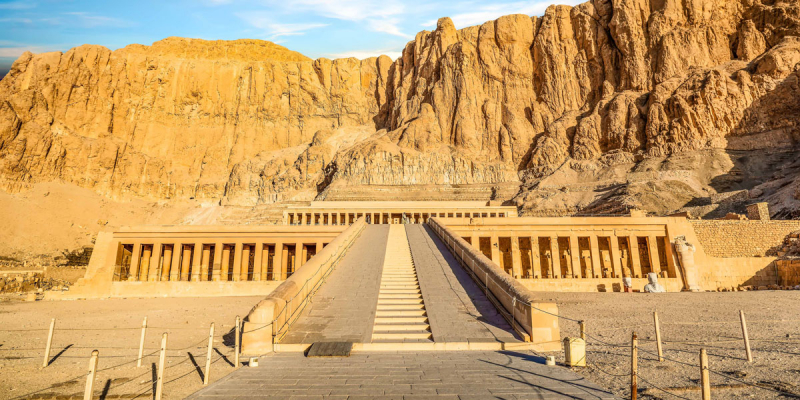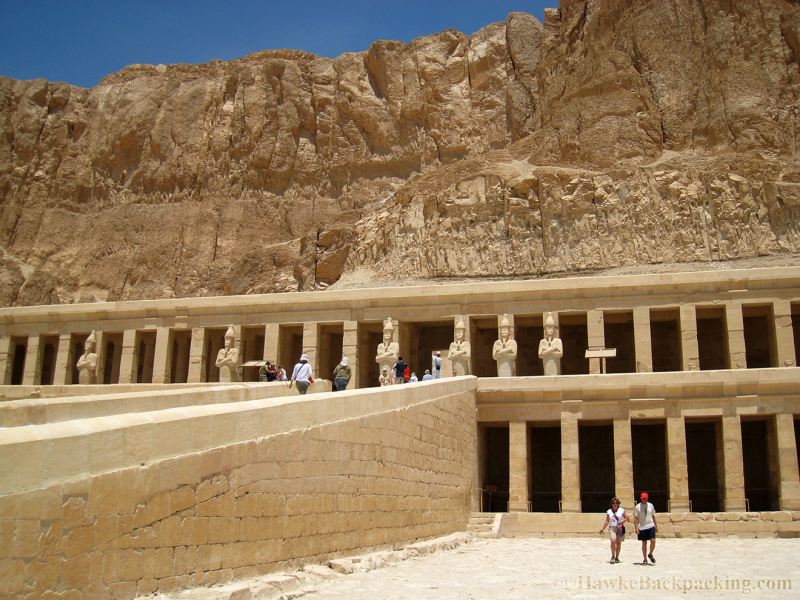Hatshepsut’s grand mortuary temple
Hatshepsut's mortuary temple at Deir el-Bahri was a centerpiece of her architectural efforts, aiming to reassure the populace that she, like any other male pharaoh before her, was a god. The temple is a living testament to Hatshepsut's achievements, with a length of nearly 2.5 football fields and limestone cliffs in the neighborhood. Over 100 statues of Diana may be found in the temple, some of which depict her as the sphinx protecting the entryway.
The ancient Egyptian complex at Deir el-Bahari consists of funeral temples. It is on the west bank of the Nile, directly across from Luxor, Egypt. The Temple of Mortuary Hatshepsut, also known as Djoser-Djeseru, is located next to the Temple of Mentuhotep II beneath the cliffs of Deir el-Bahari. Many believe it to be one of Hatshepsut's greatest achievements and one of the ancient world's architectural wonders. Hatshepsut's temple incorporates temples to Anubis, the deity of death, Hathor, the goddess of fertility, Amun, the ruler of the gods, and Re, the sun god, and is adorned with scenes depicting her reign's triumphs. The temple was designed by Senenmut, the official supervisor of works at Deir el-Bahri.
A wonderful work made by a woman's hands is truly admirable. Not only that, but the temple of Deir el-Bahari is also a wonder of the world from ancient times to modern times. And structures like the Temple of Deir el-Bahari are recognized as one of the main accomplishments of female Pharaoh Hatshepsut.







